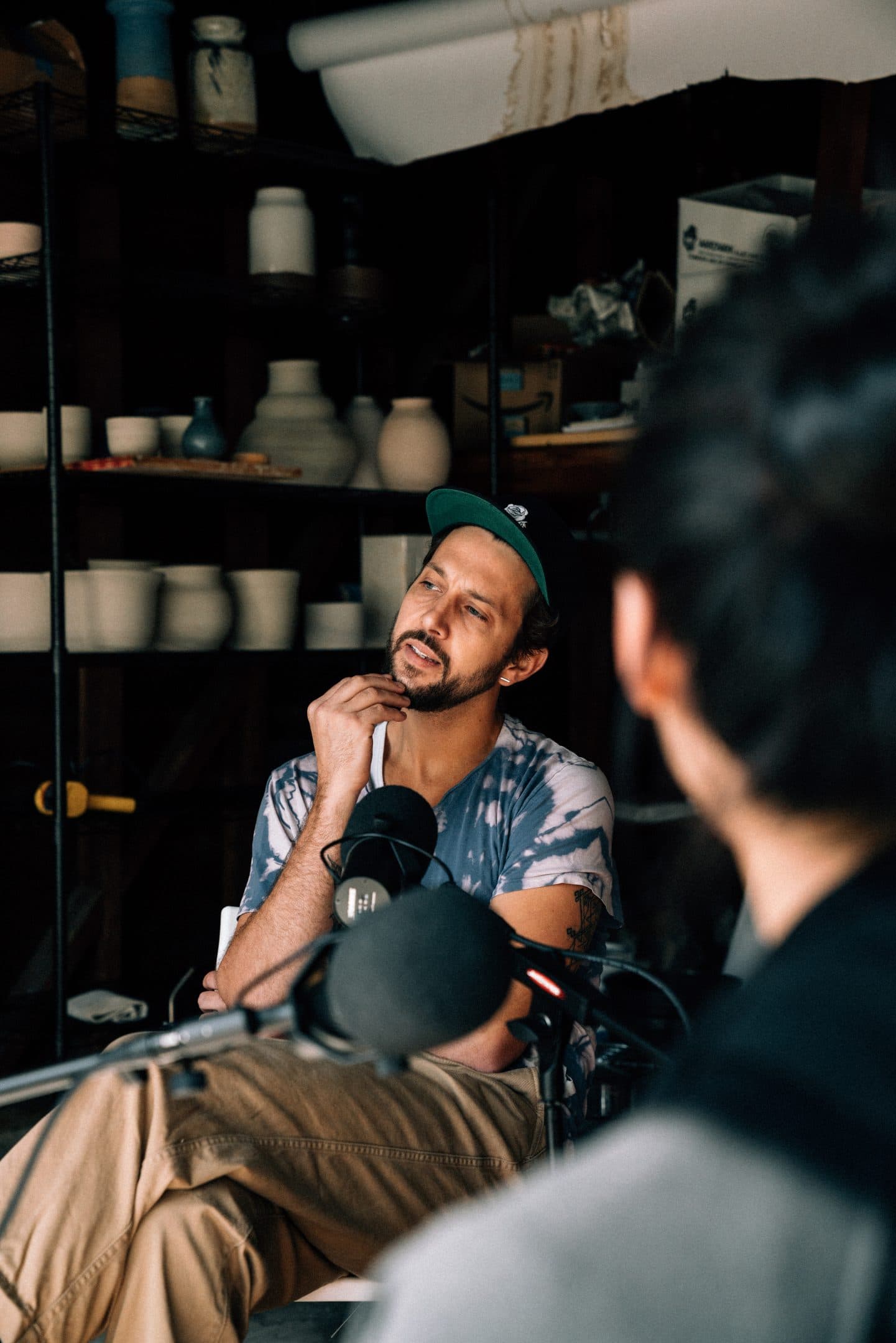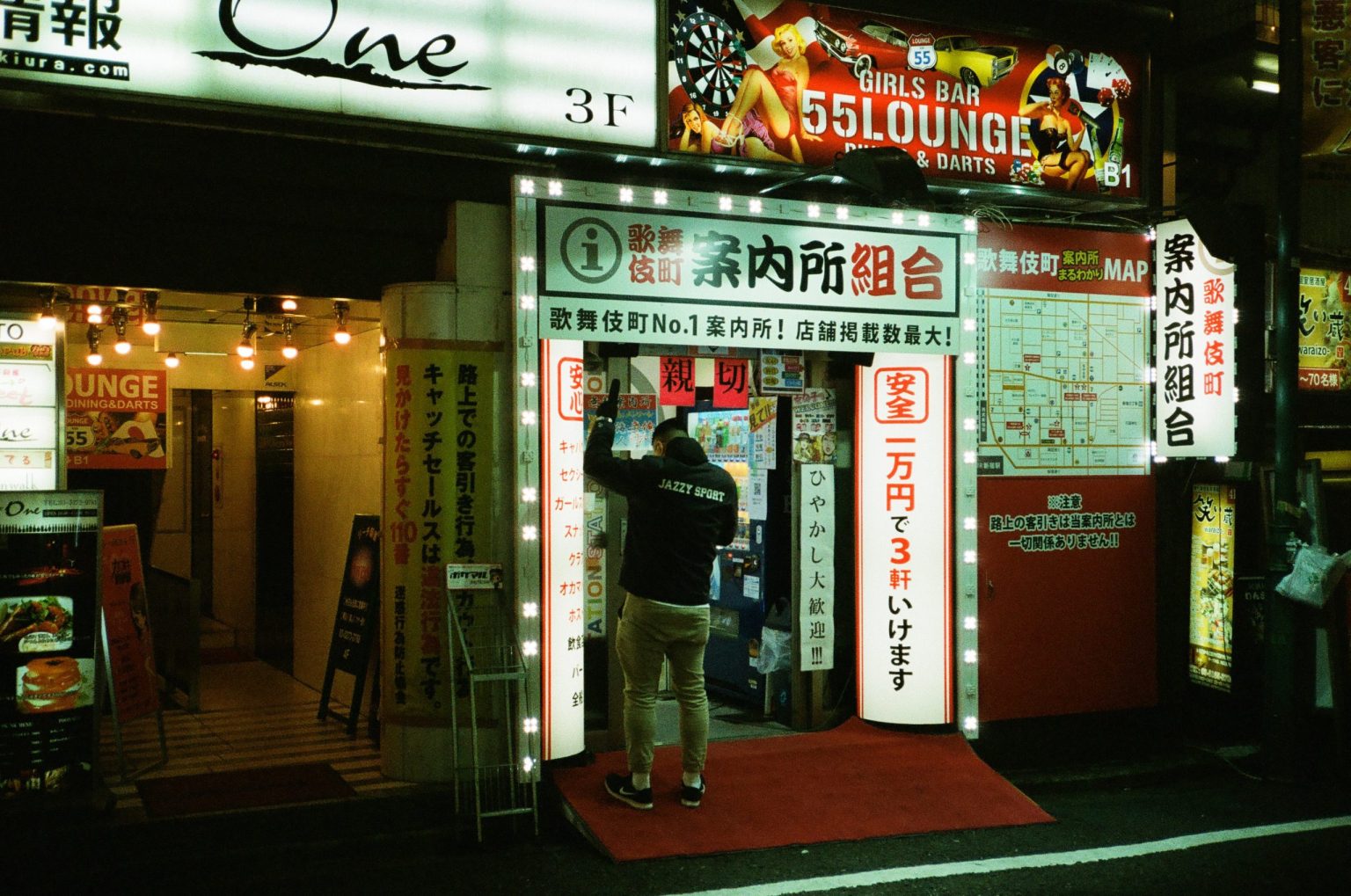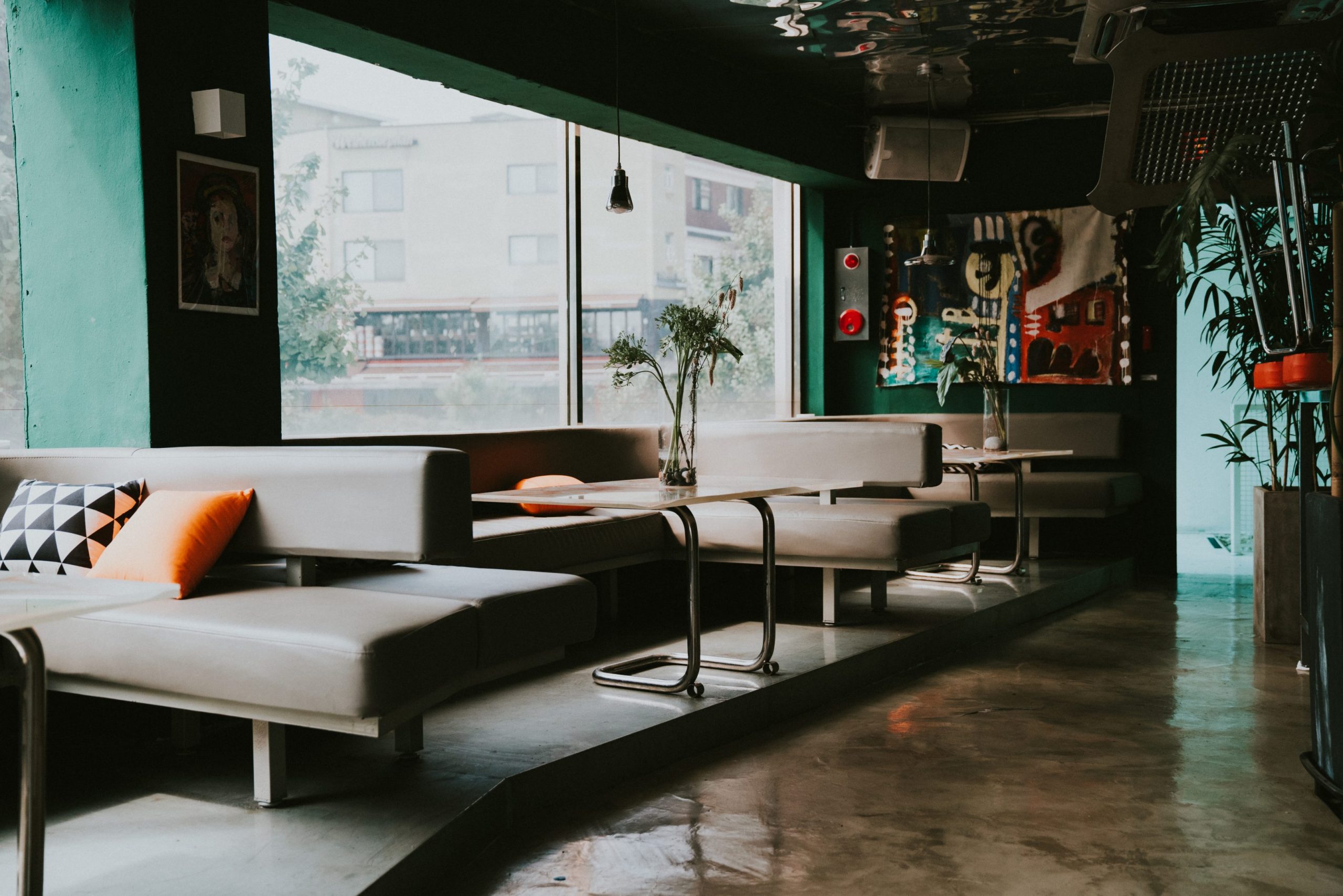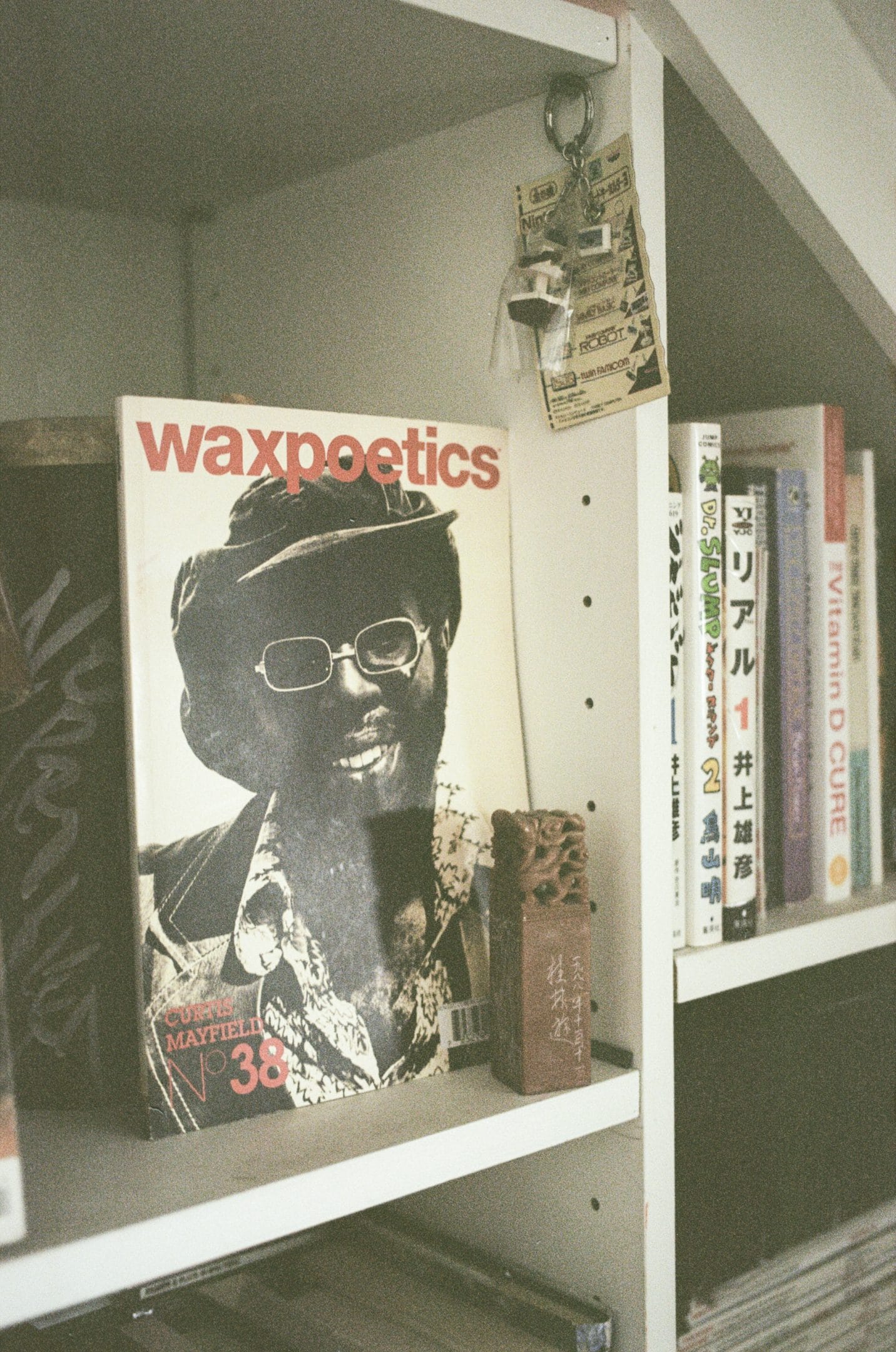The MAEKAN Classroom is a series created by the MAEKAN team to pass on the skills we’ve learned in the past few years. We don’t plan to wait until we have a “masterclass” or spent decades honing our craft to share experience and knowledge that works. We want to help get self-taught creatives started telling and publishing their stories today.
In this third episode, we go over the steps you can take to organize the production of your story before you hit ‘record.’ In the event that your recording session is time-sensitive or on a large scale, planning goes a long way toward ensuring that you’re ready on the day and more importantly, that you have everything you need once you enter Post-production.

Fundamentals
- Prepare early and prepare in proportion to how big or complex you want the end story to be and in proportion to how much access you have to a subject. For example, you won’t need to prepare as much the first time if you can revisit the subject or location freely.
- Make lists: If you have a lot of sounds to capture or complex recording needs, make a capture list and equipment list before heading into the field.
- Or, y’know, just wing it: If you’re one of the many creatives that get deadlocked by rigid processes, just take your camera—or in this case, your recorder—and go (especially if you don’t have a story you’re currently producing). You’d be amazed how much you can learn from going on a Sound Walk and hearing the world with enhanced hearing through earbuds.
Identifying Audio Elements
Now that you know what story you want to tell and what equipment you have at your disposal, you can start preparing to tell it.
This means you’ll identify what kind of audio elements your story might need—and how you’re going to get the needed audio to be used in your later story. You can roughly categorize these different audio elements based on where you’ll get the sounds from:
- People: Is there going to be an interview, a discussion or narration? If so, how many people will be involved in for each of these types of recordings
- Locations: The different sounds taken from a given location.
- The Internet: Pre-recorded music and sound effects gathered from other sources such as the Internet.

www.fahimkassam.com
People
More likely than not, your story is going to have human voices in it. But how are they going to tell the story? Are you having a podcast-style discussion with several people, or a straightforward interview? How many people will be involved? Depending on what human voice elements you’ll have in your story, you’ll have to prepare differently.
One creative decision that you can make now that will guide you is how scripted or unscripted do you want it to be?
Unscripted — Discussions: If you’re just going to record a discussion, then all you really need is either interesting people or an interesting topic. No, seriously. If you’re not doing anything too complex, good chemistry and a well-paced discussion around an interesting topic already has a good chance of drawing in your audience.
Quiet Venue: Try finding a venue that’s reasonably quiet or that you can make quiet by having access to turn off the A/C and especially music.Try to provide an environment where everyone feels comfortable and the recording equipment can take a back burner to the human connection: A recorded conversation should feel just like that; two or people sharing their thoughts and building off of each other’s energy.
Record to Separate Channels: If possible, make sure each participant is recording to a channel separate from the others. This will make editing easier later.
Briefing: Where possible, make sure everyone knows what they’re going to be talking about and a little bit about the people they’ll be talking to.
Happy People: Keep everyone happy with water, beverages or other conversation-starting substances.
Notes: If you’re participating in the discussion yourself or if you’re tackling a range of complex topics, you might want to keep some notes relevant to the discussion to fall back on.


Semi-scripted — Interviews
If you’re going to be interviewing one or multiple subjects, here are a few ways you can ensure you walk away with the best recording possible (technical aspects aside):
Briefing: communicating to your subject in advance what kind of story you’re trying to tell will help them give some indication of what they’ll be talking about. Some subjects can talk off the cuff and some prefer to have some time to prepare.
Interview Skills: Aside from asking good questions (i.e. not leading or invasive ones), these skills include building rapport with your subject by being attentive even as you’re attending to other tasks such as taking notes or double checking the recording device.
Research: How much research you do on a subject prior to the interview depends on your subject and how you want the interview to unfold. As Alek points out in his episode of Building the Brand, British documentary maker Louis Theroux is known for not overly coaxing answers out of his subjects and allowing them to speak freely and build their own case.
Key Information: that said, there might be key pieces of information you’d best get recorded (though not used in the final story) such as the subject’s pronunciation of their own name and a summary of where they’re from and what they do. This will save you the hassle of having to constantly fact-check with them, especially if you have limited access to them or if they’re likely to be too busy to be able to respond in a timely manner.
Scripted — Narration
If your audio story is going to feature any sort of scripted recording, here are some things to consider as it’s being written whether that’s by yourself or by someone else.
Optimization: Is the script written for the ear as opposed to the eye? Because listeners are unlikely to—or unable to—rewind, your script should be understandable on the first listen.
Tone/Narrator: Does the tone or complexity of the script match the person being recorded and his or her ability? Is the wording super formal while the person recording rarely speaks in that manner?
Balance: Are there too many long stretches of just one narrator’s voice or is there room for breaks, interludes, transitions to interview audio etc.? Are there too many sound effects that could disrupt the flow of the story or the build-up for certain key moments?


Elphick sampling sounds from a local business.
If you’re planning on having a straightforward interview or discussion, you likely won’t need any extra sounds to capture from the environment unless you want to enhance it (thoughtfully, of course).
Room Tone: If you’re going to be recording your discussion or interview on location, you should get at least one minute of room tone from the room where an interview or discussion is happening. This means recording at roughly the same position and angle the other mics were at when they were recording people.
Ambient: These are the ambient sounds from the setting such the city streets, the forests, the restaurant and so forth.
Specific Sounds: These are the isolated sounds you want to focus on in an environment (the “detail shots,” if you will. These are the doors opening, the smartphones ringing, the silverware clinking etc.
Foley: In the filmmaking context, foley just refers to creating sound effects to add the a film’s audio track after shooting. In this case, we just refer to foley to mean sounds you might have to create yourself either in studio or on location. For example, for Chris’s cameras on his episode of MAEKAN Tools, we had him take several photos using his empty Pentax 645 to capture the distinct “clunk” of the shutter, which was easier than searching the Internet for a soundbyte.


For all the other audio that might be too hard or impossible to get on location or in studio, you can always turn to the Internet. Music and effects are all audio elements that are added later in post-production. You don’t need to decide these now, but maybe you’ll want to note what you want to add later.

Music: When we’re not using original tracks from Elphick, we turn to royalty-free sites such as Artlist.io.
Ambient: You can download ambient sound of different locations (such as a street, restaurant or classroom), but this might not be a good match for your story depending on where it was recorded.
Individual Sound Effects: includes downloadable sound effects, tones, beeps and atmospheric effects such as static and buzzing.
Reference audio: can include complete audio pieces from other sources. For example, our story on OKOKOK featured audio clips taken from many different sources including YouTube.

Due Diligence
If you’re just starting out, you might want to do a few more steps before your first recording session. The more you know before production starts means fewer unpleasant surprises on the day.
Meet and talk to your subjects ahead of time: This applies more if you’ve scheduled time to meet someone or be somewhere specific to record. Breaking the ice well before you sit down to record to someone you don’t know that well means less initial awkwardness, fewer repeated takes or breaks, saved time and better capture. Even if you already know the subject, there’s a difference between chatting with them and being recorded while you talk with them.
Whoever your subject, you should brief them well ahead of the recording session if the schedule’s tight.
Visit and test your locations ahead of time: If you can’t physically visit a location, asking or researching about it might give you some ideas of what you might expect. For most locations, your biggest concern will be background noise you can’t control such as crowds of people, traffic or even nature, so knowing a bit about how your locations sound in advance means you can plan ahead if you need to find somewhere quieter to record.
Test any new equipment or setups:
If you’re working by yourself, with new equipment or with new configurations or settings, you should obviously test these out (and practice handling and recording with it) before you head out. This will save your time and energy and let you focus on creating your story.
Key Takeaways
• Identify what your story needs from people: will the audio be unscripted, semi-scripted or scripted? Does everyone involved know what they’ll be doing and talking about?
• What sounds need to be captured on location and which ones need to be sourced from elsewhere?
• Have you made notes, checked out your locations and tested your equipment? Make lists to be safe.
• After all is said and done, do all of these audio elements support the original angle you established at the beginning?
All Sections
Part 6 — Publishing & Promotion
If you have any questions or feedback on this episode or series, drop us a line at info@maekan.com.






















